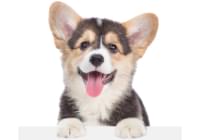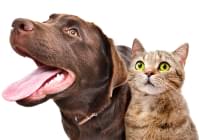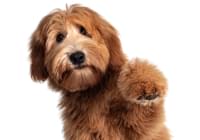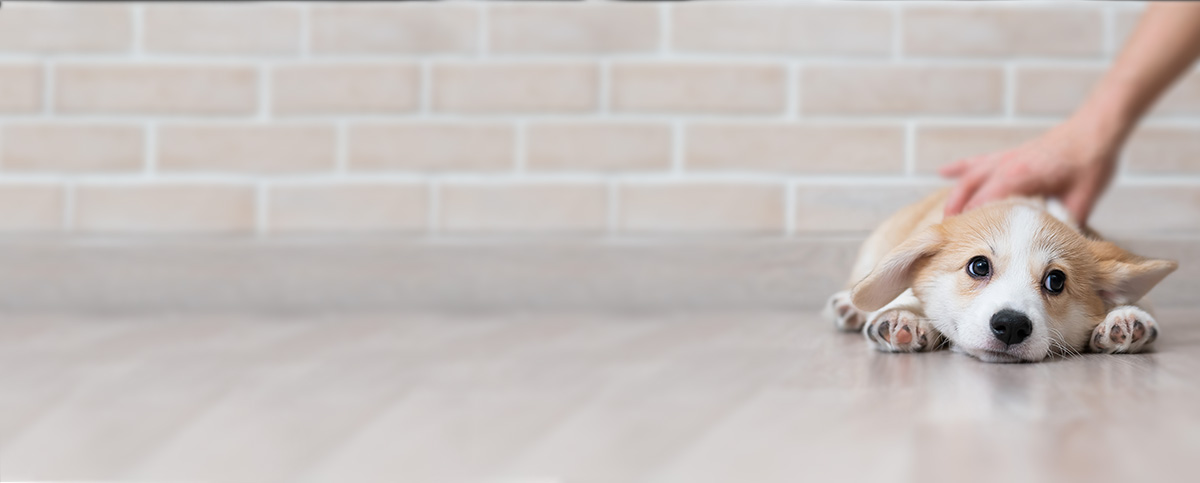Cruciate Ligament Rupture
The knee joint is a relatively unstable joint because there are no interlocking bones. It is held together by ligaments in a criss-cross pattern (cruciate ligaments) that run between the femur and the tibia. Just as athletes (football players, in particular) frequently suffer knee injuries, pets can also injure their knees.
When severe twisting or excessive extension of the joint occurs, the most common injury is a rupture of the cranial cruciate ligament (CCL or ACL). When it is torn, instability occurs that allows the bones to move in an abnormal fashion in relation to one another. Cruciate ligament ruptures are very painful and often the pet cannot stand on the affected leg. Every time the pet attempts to put weight on the leg, the bones shift against each other creating inflammation and damaging the joint.
Contributing Factors/Causes
- Obesity or excessive weight can be a strong contributing factor in cruciate rupture. The ligament may become weakened due to carrying too much weight; this causes it to tear easily. Obesity also makes recovery time much longer.
- Large breed, highly active dogs are at higher risk for CCL rupture
- Post-legged (straight-knee/straight legged) dogs are at higher risk for CCL rupture
- CCL rupture on one leg makes the risk for rupture on the opposite leg much higher
Clinical Signs
Dogs with a ruptured CCL are usually lame and may refuse to bear weight on the affected leg. Eventually, most dogs become more willing to bear weight but some degree of lameness remains. Over time, without surgical repair, the joint becomes severely arthritic as the body attempts to stabilize the joint with scar tissue and arthritis.
Diagnosis
The most reliable means of diagnosing this injury is to move the femur and tibia in a certain way to demonstrate the instability. This movement is called a "drawer sign." Most dogs require sedation in order for the veterinarian to feel the drawer sign. X-rays may also be necessary to rule out other causes of lameness or to evaluate joint changes. In some cases, the ligament is only partially torn and diagnosis can be challenging because the drawer sign may not be present or may not be significant. Many of these cases still benefit from surgical exploration and repair.
Treatment
Correction of CCL rupture requires surgery. Surgery involves not only repairing the instability, but also evaluating the joint and trimming or removing damaged meniscal tissues and cruciate ligament remnants.
There are three main types of surgical repair:
Extracapsular Repair
A surgical implant wire (similar to fishing line) is placed that replaces the function of the cruciate ligament. This is ideally used on dogs less than 80 pounds, although we have had success with this technique in larger patients as well.
Tibial Plateau Leveling Osteotomy (TPLO) / Tibial Tuberosity Advancement (TTA)
These procedure involves cutting the tibia and rotating it to stabilize the joint. TTA also includes a plate and bone grafts. These surgeries are complex and involve special training. They are generally done by an orthopedic surgeon at a referral institution
Post-operative care is critical in all surgical options. Generally the pet must have minimal activity for 6-8 weeks and then is gradually worked back up to normal activity.
Prognosis
No matter what is done, the joint will never be normal. Ideally, with prompt repair, appropriate post-operative care, and joint health supplements, the pet will return to normal function. They will develop some amount of arthritis over time, but hopefully it will be minimal in comparison to what would have occurred without surgical stabilization.
Occasionally, a dog that has a ruptured cruciate ligament will become sound (will no longer limp), even if surgery is not performed. However, progressive, degenerative arthritis will develop and result in lameness in the future. The point of the surgery is to stabilize the joint and minimize these secondary changes. Once these degenerative changes are established, the lameness cannot be corrected, even with surgery.
Cookies on this website are used to both support the function and performance of the site, and also for marketing purposes, including personalizing content and tailoring advertising to your interests. To manage marketing cookies on this website, please select the button that indicates your preferences. More information can be found in our privacy policy here.
We've upgraded our online store!
Ordering your pet's favorite food and medicine is now easier than ever.
Order Food & Meds
Quick & Easy Registration

Please use the phone number and email you currently use for hospital communications to link your account!
Linked Pet Records & Rx

Your pet's prescriptions and records will be waiting for you!
Pawsome
Savings!

AutoShip discounts, promotions on your favorite products and more!


